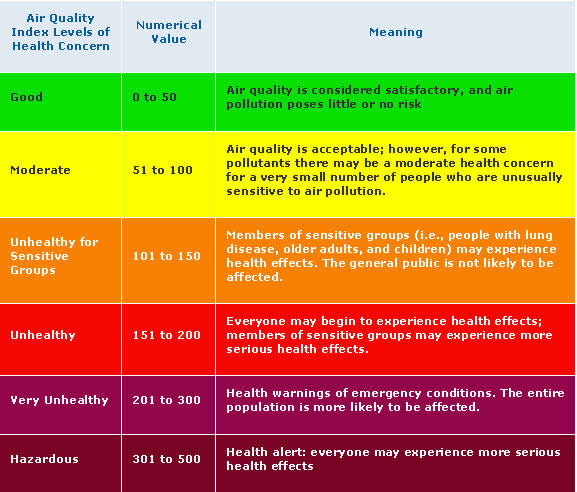By Timothy P. Fagan, BLR Air Expert
tfagan@blr.com
How is air quality evaluated?
It’s no surprise that the air quality where we live affects our health and our quality of life, but air quality in a given area is constantly changing. So EPA developed the Air Quality Index (AQI) to help provide information about local air quality that may impact your health and/or activities. The AQI reports air quality by telling you how clean or polluted the air is in your area and any health effects that may be associated with a given level of pollution. EPA calculates the AQI for five major air pollutants regulated by the Clean Air Act: ground-level ozone, particulate matter, carbon monoxide, sulfur dioxide, and nitrogen dioxide. However, ozone and particulate matter are the pollutants of greatest concern.
How does the AQI work?
The AQI operates on a scale of 0 to 500, with higher AQI numbers corresponding to poorer air quality and greater the health concerns. Typically, an AQI level of 100 corresponds to the National Ambient Air Quality Standard for that pollutant. To simplify understanding of the AQI and the potential health effects, it has been broken up into six color-coded categories as follows:

Each day pollutant concentrations are measured, converted into AQI values, and reported for the day in that area. The AQI can be found in numerous places, including:
- On the internet at www.airnow.gov;
- Via email or twitter alerts; and
- Via local and national radio and television media.
In many areas, forecasts of the AQI for the next day will be provided, allowing the public to account for air quality when planning outdoor activities, and allowing businesses to adjust operating schedules accordingly.
When the AQI reaches the unhealthy ranges, it is often referred to as an “action day,” although state and local agencies may have different names and trigger levels.
What can be done when an Action Day is forecast?
Often action days trigger operational restrictions on certain industrial sources in order to restrict emissions of pollutants that may exacerbate already unhealthy air quality conditions.
In addition, individuals can take actions to limit emissions of pollutants of concern, including:
- Conserving electricity;
- Refueling vehicles after dusk;
- Limiting engine idling; and
- Avoiding use of gas-powered lawn and garden equipment
Additional Resources:
- Air Quality Index: A Guide to Air Quality and Your Health
- Comparison of air quality in different areas of the country
Feedback: I’d like to do a series of posts on air permit training. Leave a comment or send me an e-mail and tell me what training topics are most important to you.
Timothy P. Fagan is a Legal Editor for BLR’s environmental publications, focusing primarily on air quality related topics. Mr. Fagan has covered environmental developments with BLR since 2000. Before joining BLR, he spent 5 years in environmental consulting and was responsible for air quality permitting and compliance for a broad range of industries in both the private and public sector. He received a Bachelor of Science degree in chemical engineering from Villanova University and a Master’s degree in environmental engineering from the Pennsylvania State University.
